SRAM Wireless Aero Shifting Almost Here
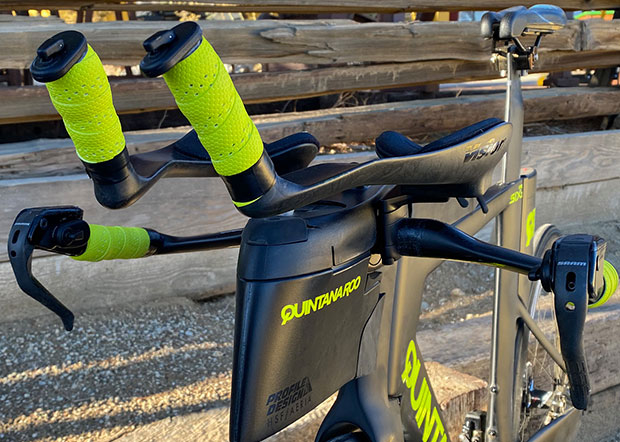
SRAM and Shimano both offer wireless shifting. In my workshop I’ve got SRAM AXS bikes, 1x and 2x, gravel, road and tri, and a Shimano 9200 bike, and they all shift great and with no wires running from the front of the bike – where the shifters are – to the back of the bike, where the derailleurs execute their functions. But…
Neither company has made this available for bar-end shifting (if we're talking the shifter as a standalone product). You still have to run wires from the front to the back of the bike, with some form of junction or junction box and, in SRAM’s case, the universally disliked Blip Box: It works, and it’s gotten smaller over time, but it needs to (at some point) retire from service. In this bike shown here there is no Blip Box. No junctions, no wires. There are 4 shifters here and there’s not even a wire that runs from the master shifter to the slave on the pursuit bars. There are 4 tiny shifters, each smart enough to send and receive signals on their own; each powered by their own tiny batteries; each working in unison with the others; each programmable in a smart phone app.
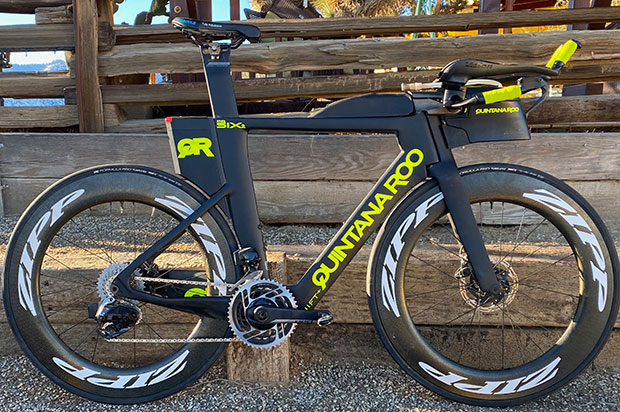
These are SRAM’s Wireless Blips and they’ve been the subjects of spy shots on bikes ridden by pro cyclists. I wrote about them way back in February. I’ve had 4 of these – enough for 1 bike – for some weeks now, and here is the good and the needed. I’m not saying the good and the bad because these shifters are not for sale yet. I suspect they will be, soon, this spring perhaps, and it’s pretty clear SRAM is moving from proof-of-concept to for-sale-product because of the molds for carrier systems that are not worthy of the tooling cost were this simply a thought experiment.
About those carriers. I found them pretty much useless for tri bikes because they don’t place the shifters where my hands are. What you see below is the carrier that came with the Wireless Blips. You clip the Blip into the carrier and clip the carrier onto a round tube. You see below a Blip and its carrier, separate, and a Blip in a carrier.

This carrier may work fine if the point is to use this as a remote switch on a road bar (shifting while hands are in the drops, or on the tops for seated climbing). But I never even investigated this because I was only focused on the greatest need I have in electronic shifting: the tri bike. Now, SRAM did anticipate this, because in the shipment I got you could either mount these on your bike with these carriers or with 2-sided tape.
I chose to use my own 2-sided tape, which I rely on with confidence, though I’m pretty sure SRAM’s included tape is fine. If you see below, this is where I placed these Blips on my pursuit shifters, and they’re here, on the side of the body of the shifter, to keep from the inadvertent shift that always seems to happen if I place the pursuit shifter on the bar itself.
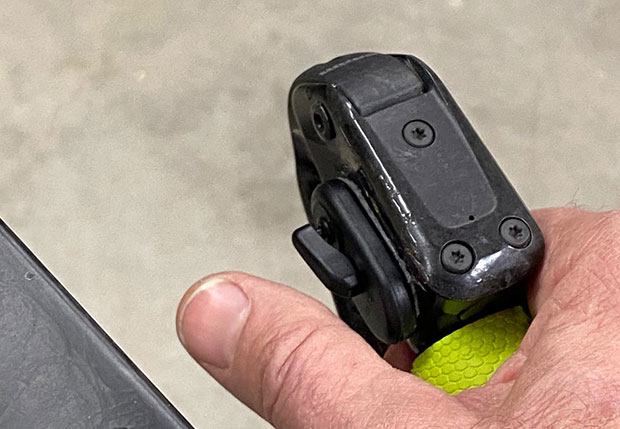
As to the bar-end placement, I took the round end plugs that went into the Vision Metron TFE Pro Extensions (which I placed on the Quintana Roo PRsix pictured here), and I cut them flat (I put the plugs into the bar ends, put the bar ends into a miter box, and decapitated the round head with a Sawzall). I did this so I would have a flat surface on which to mount the Blip with the 2-sided tape.
Which brings me to the first thing SRAM needs to do to finish this product off right: Include a bar plug with a flat surface and, for extra credit, mount 2-sided tape on that bar plug so that all I need to do is peel off the plastic sheet exposing the tape and push the shifter onto it.
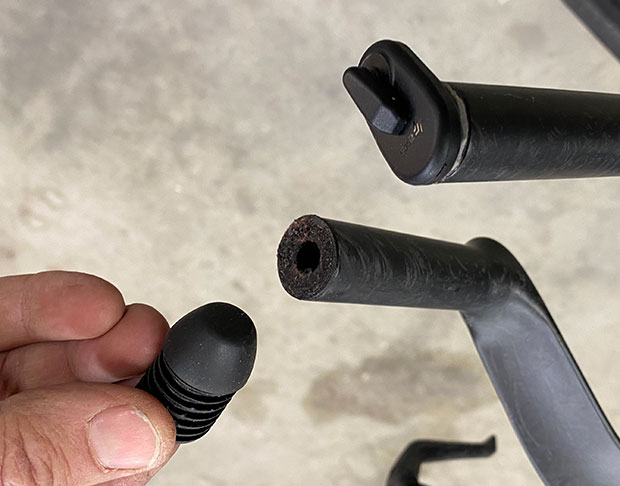
So far (in this narrative) all I’ve done is stick 4 shifters in the bike. There is no charging going on here, because there’s no capacity to charge the batteries or to even change the batteries. If you hold up a 2032 coin cell battery to the shifter, that battery is the same diameter as the shifter, which means this shifter would need to be a lot bigger to have a standard coin cell battery in it. Instead, you basically have a disposable shifter, that will give you about 2-years-worth of service. A lot of you are going to balk at that, right there, but it just depends on the price of the shifter. (See my late add at the bottom of this article, where SRAM responded saying that battery life is more likely 4 to 7 years.)
This does, however, lead me to the second thing I’d like to see before I call this product finished: I’d like to know when the battery is going to fail before it fails. Some sort of warning. A battery condition readout. Either a percentage or a yellow light between the green and the eventual red. I don’t want the battery to fail during a race. (That said, remember that you have 2 shifters on each side, each with its own battery – one on the bar-end, one on the pursuit – so, worst case, you still have shifting after one unit performs its final shift.)
How do you pair these to the derailleurs? You have to understand how the AXS app works.
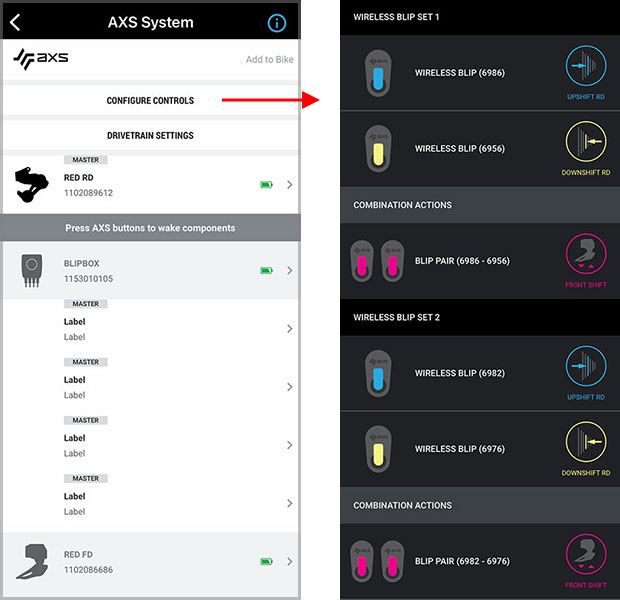
What seems intuitive to me is that you pair the components via the app. But no! If you try to do that, you’ll spend a lot of time cursing, because you’re asking the app to do something it was not designed to do. You configure in the app, after you pair, but you pair the shifters to the derailleurs without using the app. This is the case regardless of the AXS shift system: road, gravel, mullet, offroad, tri.
You press the rear derailleur AXS button until it blinks slowly. Then you press the front derailleur AXS button until the rear derailleur light blinks fast for just a moment. Then, in the case of this system I’m writing about today, you press the AXS button on the Blip Box (more on that in a moment). Then you press the bar end shifter on the right extension, then the left extension, then the right pursuit shifter, then the left. Each time you press the AXS button on a device, that green AXS light on the rear derailleur will blink fast for about a second. After you’ve gone through this cycle, press the AXS button the rear derailleur and the green light will stop blinking. You’re done.
You must follow this process exactly. Once done you’ll be able to pull up these connected devices in the AXS app (as you see in the screen shot above), and when you see them on the screen (above left) you can click Configure Controls, at which point you pull up the screen above right and can tell each shifter what you want it to do exactly, if something other than the default operations. Me? I like the default operations, which are, the left-side shifters make the RD shift to the left, the right side shifters execute a shift to the right, and if you press a left and right shifter simultaneously it makes the front derailleur shift.
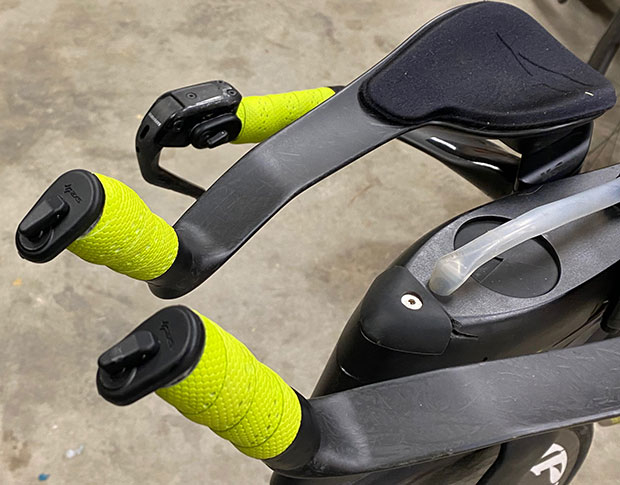
Now, that Blip Box. I thought we were done with it? Well, we are. Kind of. As it now is, these Wireless Blips need a kind of master pairing device. Anything will do. What constitutes a master pairing device? A road shifter (left or right). A Blip Box. A Zipp Vuka Shift AXS 90 extension. All these devices have a lobe to their brains that Blips (wired or wireless) lack. These devices act like Match.com. They not only are shifters, they mate other shifters with derailleurs.
In fact, just as a test, I tried to go through this pairing process without the Blip Box, that is, I clicked the RD into pairing mode; paired the FD, then went right to the Wireless Blips and paired them. No go. Then I took one Vuka Shift AXS 90 extension and used it the way I would have used the Blip Box. Everything paired fine. Then I tried pairing using a road shifter on another bike as the “Blip Box.” Worked fine.
So, here is one kind of bad thing about these Wireless Blips. You don’t need a Blip Box in order to ride with these, but you need a Blip Box (or something like it) to initially pair the system. This is fine if you are already a SRAM AXS user, because you can use a road shifter or Blip Box or anything you have off of another bike, and you only need to do it once, and you’re done. (You place your TT bike next to your road bike, and ask one of your AXS road shifters, "Can you do a brother a solid?", use it to pair these 4 Wireless Blips on the tri bike, which takes all of 30 seconds.) This doesn’t affect relationship between my road bike's paired components.
But, what if you’re new to SRAM AXS, and you buy a groupset, with 4 Wireless Blips, and you have no pairing device?
This brings us to the next thing that will help make this a really nice product. I don’t know how hard what I’m asking for is to execute, but it would be nice if the AXS app had an emulator in it that served as the system matchmaker. Mind, I’m not asking that the AXS app change how it functions. I’m not asking that pairing happen inside the AXS app. I’m just asking that whatever the code is that sits inside a SRAM shifter or Blip Box be written into the AXS app, so that the app takes the place of the Blip Box during pairing.
Okay, one more thing the app needs to do before I’m done here, and SRAM tells me that this is coming. As of now, the RD micro-adjust function does not work with Wireless Blips. As with pairing, I can borrow an AXS component off another bike to micro-adjust my derailleurs (I pair the shifters from another AXS bike with my tri bike's derailleurs to adjust the RD but, again, that' a temporary hack).
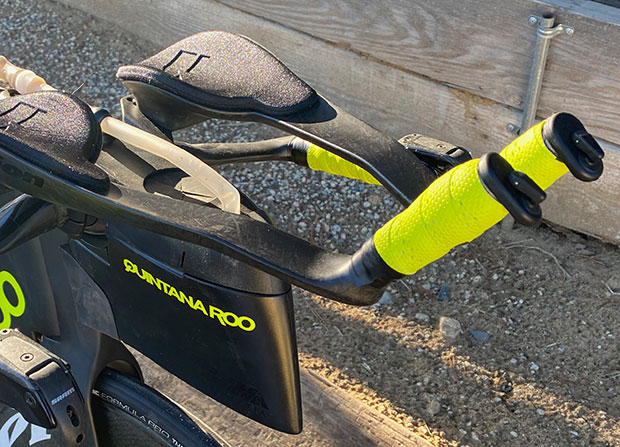
Here's what I did do: These Wireless Blips replaced a set of Zipp Vuka Shift 90 AXS extensions, so, even though they were off the bike I just paired the derailleurs with the Vuka Shift 90 extensions and performed the RD adjustment. As with road shifters, you press the AXS button on the Vuka Shift AXS 90 and simultaneously shift and the RD moves very slightly. Because there is no AXS button to push on these Wireless Blips they don’t now enjoy this function. But it’s coming, and the app will act as an emulator for RD micro-adjust.
(Let me remind you what the Zipp Vuka Shift 90 extensions are. They really were the first wireless bar-end shifters. But you had to use the entire extension and, prior to this Wireless Blip, the slave shifter on the pursuits was wired. Imagine if the Vuka Shift 90 was made in a continuous-forearm rest design, like this Vision Metron TFE Pro shown here? Mated with a set of Wireless Blips for the pursuits, that would be formidable. But that's another discussion.)
Because of the features these shifters have; and the features they lack; my instinct tells me they were never designed as bar-end shifters, but as wireless replacements for Multiclics (SRAM's wired slave auxiliary shifter). But somebody along the way asked, "Hey! What if we..?" and presto, they're reimagined as TT shifters. So what if bar-end shifting is an afterthought? These shifters are really cool. They’re lightweight, spare, easy to place, ergonomic, and by far the cleanest and easiest shifters to affix, route and configure that I’ve yet seen in our sport. They let you use whatever aerobar you want. But as bar-end shifters they’re not quite a finished product yet, as we see. I haven’t the faintest idea how much these will cost if they do in fact launch; nor do I know how many of the asks that I list above will make their way into the product if and when it launches.
But at least the promise – or the hint of the promise – of true wireless tri/TT shifting is here.
[LATE ADD: Since the publication of this article, SRAM has responded to my comment about battery life: "SRAM eTap AXS Wireless Blips have a battery life well beyond 2 years. Our testing shows that depending on level of use, batteries can last from 4 to more than 7 years. Wireless Blips are built with new batteries that are able to be dormant for several years between uses. Use the SRAM AXS Mobile App to see battery levels for all SRAM AXS components, including Wireless Blips."]


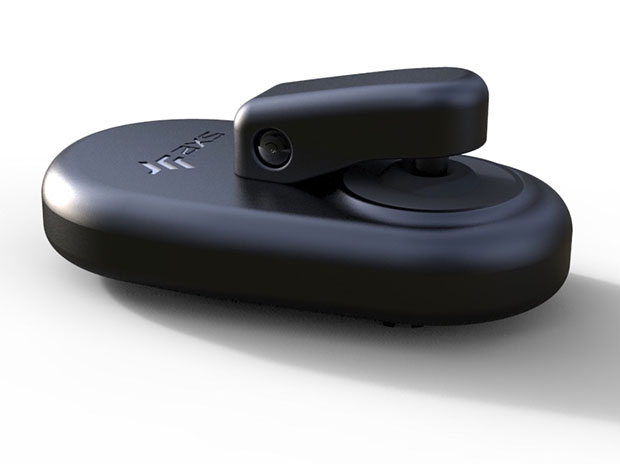
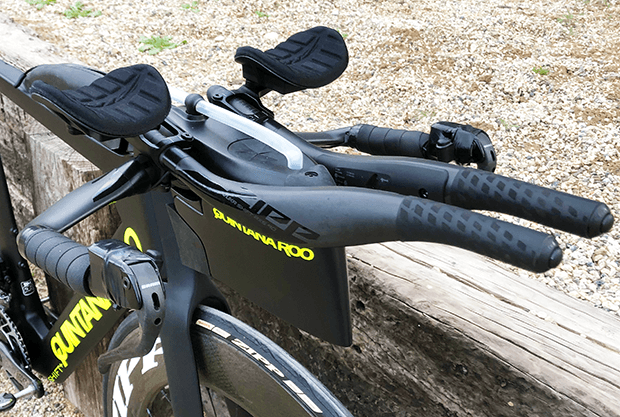
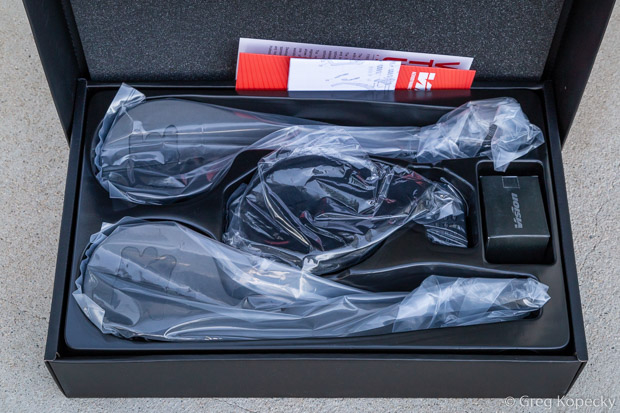
Start the discussion at slowtwitch.northend.network